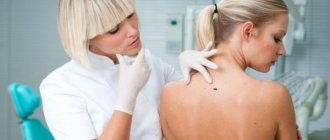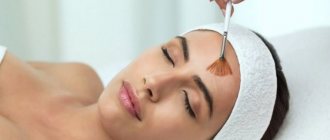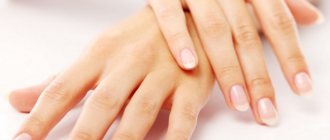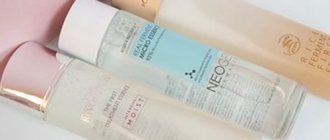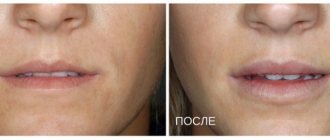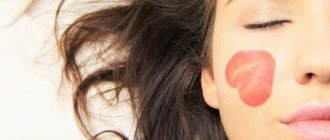Human skin is an important organ that periodically suffers from various diseases throughout life. Many people often develop various neoplasms on their skin, for which they are forced to consult a dermatologist. Warts appear in a significant number of people. Moreover, their locations are visible to outsiders.
Having noticed these tumors on their body, everyone strives to get rid of them. It has become easier to remove them in our time of modern technologies that are actively used in medicine. There are many ways to permanently remove a wart. One of the currently popular methods is cryodestruction. It involves removing warts by exposing the neoplasm to liquid nitrogen . People far from medicine have little idea of the essence of this procedure. Those who decide to use this method to remove warts are naturally interested in the question of how this procedure is carried out and how effective it is. This will be discussed in this article.
What is cryodestruction?
This procedure is usually understood as the removal of warts using liquid nitrogen. During this procedure, the tissue is exposed to low temperature, resulting in deep freezing of the neoplasm and its destruction. Exposure to liquid nitrogen leads to destruction and subsequent exfoliation of wart tissue. After some time, the tissue in the affected area is restored - healthy epithelial cells appear.
The usual cryodestruction procedure is recommended by dermatologists. They prescribe it in the following cases:
- the wart is located in an area where it interferes with the normal functioning of a person;
- a wart that appears causes aesthetic discomfort for a person due to its location in a visible place;
- the neoplasm bleeds or has a tear;
- the wart causes pain, burning or itching;
- increase in the number of warts.
Depending on the shape and size of the wart, one or more sessions . In most cases, one procedure is not enough, especially when there is a need to treat a large area of tissue. If after the first session the effect of the procedures turned out to be insignificant, then, naturally, repeated sessions are necessary. Also, several procedures are necessary if the patient who has warts on the body has reduced immunity. After the patient has undergone the cryodestruction procedure, the doctor may additionally prescribe vitamin complexes and immunomodulatory drugs.
How to remove benign tumors (keratomas and warts)
Before the procedure, the surgical field is treated with antiseptic solutions. At the request of the patient, cryodestruction can be performed both under local anesthesia and without it. Using a special port, a small amount of liquid nitrogen is applied to the tumor; the latter almost instantly begins to react with the surrounding pathological tissues, which leads to destruction of the structure.
It should be noted that if the procedure is planned to be carried out under local anesthesia, up to 10 minutes should pass after the injection, since the surrounding tissues absorb the anesthetic solution all this time. Otherwise, more extensive thermal damage to the skin may occur after cryodestruction.
The cryodestruction procedure should be performed 2 or 3 times to achieve a more pronounced effect. To do this, at least 2 minutes must pass after the first cauterization, then the procedure is repeated again.
It is important to understand that at the slightest suspicion of a malignant process or a history of cancer, cryodisruption is strictly contraindicated, since after it it is impossible to conduct a histological examination of the neoplasm.
Advantages and disadvantages of cryodestruction
Before you decide to remove a wart using this method, it will not hurt to familiarize yourself with the pros and cons of this procedure.
Advantages of the method
Like any method, cryodestruction of warts has its advantages. The main thing is that the skin heals quite quickly . Currently, the cryodestruction method is the most popular. With its help, you can remove benign tumors that appear on the skin in just a few procedures, without any consequences for the patient. If we talk about the main advantages of this procedure , we highlight the following:
- this method is accessible to most people;
- the procedure itself takes a short time;
- the risks of postoperative sutures are minimal. Scars are also excluded.
- Carrying out this procedure eliminates the appearance and spread of infection on the skin located around the wart.
Disadvantages of cryodestruction
Unfortunately, this method of wart removal has certain disadvantages . We will talk about the most important ones below.
- This procedure is quite painful. Especially if the tumors are localized in areas of increased sensitivity. During the procedure itself, as well as for several days after its completion during the recovery period, the patient feels severe pain. Therefore, it is necessary to take painkillers after completing the procedure.
- The results of cryodestruction depend on the accuracy of the doctor’s assessment of the time and depth of exposure. That is, the specialist’s qualifications and practical experience matter. If the impact on the problem area is carried out incorrectly, then there is a high risk of burns. Traces may also appear after healing.
- If the wart on the patient’s body is large in size, then several sessions are required.
What types of warts and papillomas can be removed using cryodestruction?
There are more than a hundred varieties of warts. They differ in shape, structure and location of the lesion, as well as the type of human papillomavirus that caused their appearance. These include:
- Common wart. It is a raised growth with a rough surface. It is most common on the hands, but can grow anywhere on the body.
- A flat wart is small and smooth, flesh-colored. Can occur in large numbers. Most common on the face, neck, hands, wrists and knees.
- Filiform warts are most common on the face, especially near the eyelids and lips.
- Genital papilloma occurs on the genitals.
- A mosaic wart consists of a group of tightly grouped plantar warts, usually affecting the palms of the hands or soles of the feet.
- A periungual wart, similar to a cauliflower, is located on the fingers.
- A plantar wart is a hard, sometimes painful lump, often with several black spots in the center. Occurs only on pressure points on the soles of the feet.
Using cryodestruction, you can remove any of these warts if there is no suspicion of cancer, the growth does not bother you, and the skin around it does not look inflamed. However, you should refrain from independently removing warts located on the genital area and in close proximity to the eyes. In this case, the procedure must be performed by a specialist.
Possible consequences
In some cases, after the procedure, patients encounter complications . Therefore, in order for wart removal to occur without serious consequences, it is necessary to carefully select a medical institution, as well as a doctor. You should not attempt this procedure at home. By doing this you will protect yourself from the risks of harming your health.
If, when removing a wart with liquid nitrogen, the specialist uses excessive force or incorrectly calculates the time of exposure of the tissue to nitrogen, then after the procedure is completed, scars will remain on the body. To completely eliminate the risk to the skin, it is necessary to carry out the procedure for removing warts with liquid nitrogen in several sessions. The effect on the fabric should be soft. These will avoid aesthetic defects after completion of the procedure. Removing formations without consequences directly depends on the experience of the specialist , as well as strict adherence to the technique. The qualifications of the specialist who performs the procedure are also of great importance.
Why carry out the procedure?
Cryodestruction is widely used to remove warts, moles, papillomas, condylomas and other formations that are located on the surface of the skin. This method removes defects on the arms, legs, shoulders and other parts of the body with the exception of the face.
Thanks to excellent aesthetic results, absolute painlessness and a number of other advantages, cryodestruction is widely used in cosmetology, dermatology, as well as gynecology in the treatment of cervical erosions, papillomas and polyps, urology for the removal of condylomas, proctology during the treatment of hemorrhoids or polyps, otolaryngology for inflammation tonsils. It can also be used for large benign tumors and skin cancer.
Methodology of the procedure
Before directly carrying out the cryodestruction procedure with liquid nitrogen, the specialist carefully examines the area of skin where the tumor has arisen. It determines the number of warts that need to be removed, their type, and size. If the wart is small, the doctor may advise not to carry out the procedure, but to postpone it for a while.
The process of removing tumors on the skin is carried out using the contact method using a special cryoapplicator device. It is cooled to a temperature of 196 degrees below zero. Under the influence of such a low temperature on the wart tissue, it dies and the cells are rejected. After this, a process of rapid skin regeneration occurs in the damaged area.
The duration of exposure of the wart to liquid nitrogen can vary from 10 to 30 seconds. Everything largely depends on the location and size it has. Liquid nitrogen evaporates after 20 seconds. Therefore, the procedure is repeated several times . During its implementation, the cryoapplicator should be in contact with the surface of the wart, as well as with the skin around it to a width of up to 1.5 mm. The effect of liquid nitrogen on the wart tissue causes it to turn white. The cryodestruction procedure is considered completed only after a white halo appears around the periphery.
Advantages
It is well known that each treatment method has its own advantages. Cryosurgery is no exception in this regard. We list the main advantages that will help you decide on the choice of treatment method:
- The procedure can be performed in both outpatient and inpatient settings.
- Relatively inexpensive, which makes it accessible to the majority of the population.
- There is no need for general anesthesia (anesthesia). Even for the removal of massive tumors on the skin, as a rule, local anesthesia is limited.
- It is considered a fairly safe and not particularly difficult procedure to perform.
- Any localization of the pathological process (hands, face, neck, etc.) can be subjected to cryodestructive effects.
- The period of pregnancy and breastfeeding are not a contraindication to the procedure.
- The ability to treat patients who have contraindications or refuse surgery.
- In most cases, it is possible to achieve a satisfactory cosmetic effect.
If necessary, in modern medical reference books you will find comprehensive information about what cryodestruction is.
Features of removing flat warts
Removing flat warts with liquid nitrogen has its own nuances. When performing the procedure, cryomassage is used. During this procedure, a cryoapplicator is used, which is a special reservoir. It has a cylindrical shape and a metal tip, through which cryomassage is performed. During the procedure, tips of various shapes .
During the procedure, the cryoapplicator is positioned parallel to the skin. It is moved with rotational movements over the surface of the affected area until it turns pale. Usually 4 sessions are enough to achieve the desired effect. The duration of each usually does not exceed 2 minutes.
Methods of influence
To date, several basic methods of cryotherapy and cryosurgery have been developed. The most common methods of cryotherapy on the skin:
- The "reed" method.
- Probe method.
- Spray freezing.
In dermatocosmetological practice, the “reed” method is usually used for gentle cryotherapy. Most often used to remove various superficial neoplasms of a benign nature (warts, nevi, rashes, etc.). Take a wooden stick and wrap cotton wool around one end. We immerse it in liquid nitrogen. Then apply the tip of a stick with cotton wool, treated with liquid nitrogen, to the tumor for 15–45 seconds. The size of the tumor determines the duration of the procedure. The depth of exposure with these methods does not exceed 2 mm.
Benign tumors are mainly removed using the probe method. To ensure good contact with the skin, the cryoprobe must be pressed tightly against the tumor. They can use a special adapter that expands the freezing area, but at the same time reduces the depth of cryotherapy. If the cryoprobe is immersed in tissue, deep freezing will be observed. The main disadvantage of the probe method is the adhesion of the cryoprobe to tissue, which limits its mobility. Also, incomplete contact with tissue will not allow sufficient freezing.
Seborrheic keratomas, acne, actinic keratoses and cheilitis, warts, lentigo maligna and some other tumors are successfully treated by spraying or open spray. The freezing mixture is directed to the pathological area from a distance of 10–20 mm perpendicular to the skin. One of the main advantages of the method is the ability to quickly freeze large areas of skin and achieve a clinical effect without fear of developing severe adverse reactions. However, this method is not able to deep freeze tissue.
Cryodestruction for skin tumors can be effective after the first procedure.
Features of plantar wart removal
When it becomes necessary to remove warts located on the foot, several sessions are required. It is particularly special to remove warts with liquid nitrogen that appear on the nails or on the soles. You should know that during cryodestruction severe pain occurs, which is due to the fact that the skin is exposed to liquid nitrogen for a long time. In addition, its impact is quite strong. achieve a positive result during the procedure after 5 sessions . Between each procedure it is necessary to maintain an interval of up to 5 days.
It should be said that when removing warts from the sole, the recovery period is quite worse than in other cases. A disability may occur for a period of up to 20 days, since when stepping on the treated area of the foot, a person experiences severe pain.
Indications for cryogenic treatment of skin cancer - are there any contraindications?
The considered method of treating skin cancer can be used in the following cases:
- The patient was diagnosed with basal cell carcinoma of stages I and II. The area of one basal cell carcinoma should not exceed 3 cm2, and the tumor should not grow more than 3 mm. If these parameters are higher, doctors opt for a different method of treating the disease.
- A malignant neoplasm is localized on the trunk, external genitalia, upper or lower extremities, and also on the face. Thanks to cryodestruction, it is possible to preserve the relief and color of the skin as much as possible, which is especially important in cases where the cancerous tumor is located on the facial part of the skull.
- A patient with skin cancer is an elderly person with a history of a number of concomitant diseases. In such a condition, the use of general anesthesia is unacceptable.
- Tendency to form keloid scars.
- Presence of a pacemaker.
- Poor blood clotting, which is associated with taking anticoagulants.
Video: Cryogenic treatment of basal cell carcinoma on the skin
This procedure is not carried out in the following cases:
- A cancerous tumor has no clear boundaries.
- The tumor grows into the deep layers of the skin and also affects cartilage, muscle or bone tissue.
- The patient is diagnosed with scleroderma-like or infiltrative forms of basal cell carcinoma.
- The surgical site is localized in the neck, where the neurovascular bundle is located.
- A malignant neoplasm is located in the corner of the eye, in the area of the nasolabial fold and/or on the wings of the nose.
- Acute infectious process in the body. Treatment with nitrogen is carried out only after the elimination of inflammatory phenomena.
- Raynaud's disease, as well as other ailments associated with intolerance to low temperatures.
Skin care recommendations
When a bubble appears on the skin after removing a wart, you must avoid getting it wet. It should also be prevented from piercing it. Wounds should be treated with 2% salicylic alcohol twice daily. You can also use a concentrated solution of potassium permanganate . Exfoliation of dead cells occurs after a week. After this, processing can be omitted. The appearance of all warts is the result of a viral infection on the skin. It can be easily transmitted through household contact. Therefore, in order to prevent the occurrence of warts, it is necessary to observe the rules of personal hygiene; you should not use shared towels or washcloths.
Patient reviews
Cryodestruction of warts is a fairly popular procedure, so many patients have already been able to use it. The sensations after the procedure are different for each person. And impressions, of course, also differ. The reaction after cryodestruction is purely individual.
Many patients who have tried cryodestruction on themselves report pain that occurs during the session. They also talk about the occurrence of pain during the first two days after completion of the procedure. Often the pain is severe. This is mainly due to the fact that each person has a different sensitivity to the pain threshold. Children experience especially severe pain after this procedure.
The disadvantages of this method were considered by most patients to be the need for a repeat procedure. If you need to treat a large surface, then you cannot do without several sessions of cryodestruction. This is also required in cases where a person has a weak immune system or the force of action on the root of the wart is insufficient in strength or effect.
Despite some nuances, this method in most cases turns out to be highly effective for removing warts. Many patients who have already used it talk about such a positive thing as the absence of scars and scars after healing of the treated skin area.
Cryodestruction of basal cell carcinoma and wound care. Cryodestruction of basalioma
In the section Diseases, Medicines, to the question How to properly care for the wound after cryodestruction of basal cell carcinoma?
asked by the author Marat Zainullin the best answer is Cryodestruction. Wound care after cryodestruction of basal cell carcinoma.
Immediately after cryodestruction of basal cell carcinoma is completed, you may notice a reddish rash or hives around the tumor. Then, within 12-24 hours, swelling forms, turning into a blister, followed by weeping of the wound for about several days. During this period, the wound is treated with 10% potassium permanganate (dark solution) or synthomycin liniment. It is also necessary to wash the wound after cryodestruction daily with soap (children's, laundry). The scab forms within 2 weeks and may include underlying tissue. The wound heals within 1 month; in the case of healing on the legs and back, the process can take up to 3 months. The scab must be separated and removed before healing is complete. If a wound after cryodestruction of a large basal cell carcinoma or healing is delayed, it is necessary to take vitamin complexes.
Side effects after cryodestruction of basal cell carcinoma.
Cryodestruction of basalioma causes tissue swelling - this is a common side effect. The severity of edema depends on the size of the basal cell carcinoma, the duration of cryodestruction; the greater the edema, the stronger the immune response. Swelling usually goes away within 1-2 weeks if the procedure takes place on the face - the appearance during this period after cryodestruction may not be very presentable.
It is also common for an area of skin to become pale after cryodestruction; it may go away over time and may remain for life. Pallor is more noticeable on dark skin.
Numbness of the skin in the area of cryodestruction almost always goes away within 1-2 months; it rarely lasts longer.
Cryodestruction of basalioma less than 1 cm in diameter leaves virtually no scars. Treatment of larger basal cell carcinomas leaves pale scars.

